Buy A New Car
Mazda Hits 2021 With Updates To The Mazda6
Mazda Australia has released details of the key updates for 2021 to their Mazda6 Sedan and Wagon. Sales are due to start for the updated vehicles from March of 2021. This includes the addition of the GT SP Turbo 2.5L four cylinder engine which will be available in the sedan and wagon.  Mazda Australia Managing Director, Vinesh Bhindi, commented: “As our passenger car flagship, Mazda6 holds strong appeal in its segment with its advanced specification and option of Sedan and Wagon body styles. This latest update is highlighted by the new GT SP model, which brings a distinctly sporty characteristic to the Mazda6 range and builds on the local GT SP portfolio alongside the CX-9.”
Mazda Australia Managing Director, Vinesh Bhindi, commented: “As our passenger car flagship, Mazda6 holds strong appeal in its segment with its advanced specification and option of Sedan and Wagon body styles. This latest update is highlighted by the new GT SP model, which brings a distinctly sporty characteristic to the Mazda6 range and builds on the local GT SP portfolio alongside the CX-9.”
The Mazda6 Sport Sedan and Wagon offers a solid list of standard equipment. The sedan and wagon will ride on 17inch alloys with 225/55, rubber. Headlights are LED powered, as are the rear lights. The wing mirrors will be heated for those frosty and foggy mornings, and the wagon gets roof rails and a rear spoiler as standard.
Inside is Apple and Android app compatibility via an 8.0 inch satnav equipped touchscreen plus Bluetooth streaming and Mazda’s MZD Connect function. Stitcher and Aha internet radio is listed as standard. Passengers are kept cool thanks to dual zone climate control and rear facing vents for the second row passengers. The wagon receives a cargo net and Mazda’s Karakuri tonneau cover. There’s an electric park brake, leather wrapped steering wheel and gear selector knob, and Mazda’s Multi-function Control.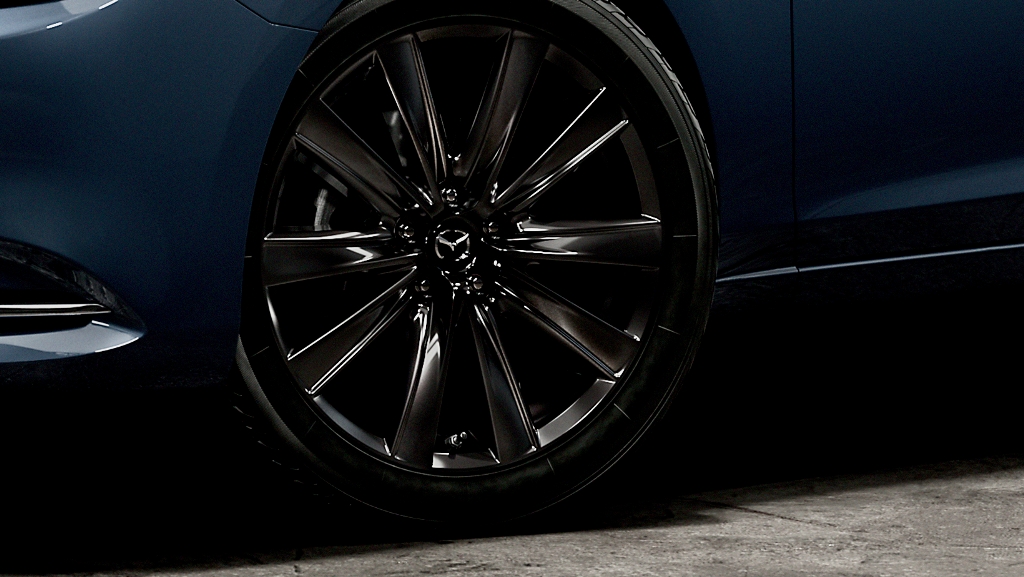 Passengers sit on black cloth covered seats, and second row passengers have a USB port in the seat arm rest.
Passengers sit on black cloth covered seats, and second row passengers have a USB port in the seat arm rest.
Safety is high, with Blind Spot Monitoring, a Driver Attention Alert function, along with Lane Departure Warning, Rear Cross Traffic Alert, and Mazda Radar Cruise Control. Traffic Sign Recognition and Smart Brake Support are fitted, as is Smart City Brake Support [Forward/Reverse]. Tyre Pressure Monitoring makes sure all four corners can be checked on the go. Move to the Touring variant and there is black leather seats with the driver’s seat having a two position memory function along with 10 way adjustment. The passenger has a six way adjustment feature. LED DRLs are standard here as is keyless entry and front parking sensors.
Move to the Touring variant and there is black leather seats with the driver’s seat having a two position memory function along with 10 way adjustment. The passenger has a six way adjustment feature. LED DRLs are standard here as is keyless entry and front parking sensors.
On top of the Touring specification, the GT SP adds the turbocharged 2.5-litre petrol engine, plus 19 inch black painted alloys with 225/45 tyres. Front and rear seats gain heating and are wrapped in burgundy leather with the same colour highlights added to the instrument panel and door trims. Power for the Sport and Touring Sedans & Wagons comes from the Skyactiv-6 2.5L petrol four. Peak torque is 252Nm (4,000rpm(, and power is 140kW (6,000rpm). Economy is rated at 7.0L/100km A six speed auto drives the front wheels. Both GT SP and the Atenza variants have a same sized angine with 170kW (5,000rpm( and a very impressive 420Nm of peak torque at just 2,000rpm. Economy is rated at 7.6L/100km and that’s using 91RON unleaded.
Power for the Sport and Touring Sedans & Wagons comes from the Skyactiv-6 2.5L petrol four. Peak torque is 252Nm (4,000rpm(, and power is 140kW (6,000rpm). Economy is rated at 7.0L/100km A six speed auto drives the front wheels. Both GT SP and the Atenza variants have a same sized angine with 170kW (5,000rpm( and a very impressive 420Nm of peak torque at just 2,000rpm. Economy is rated at 7.6L/100km and that’s using 91RON unleaded. Visual differentiation sees both GT SP and Atenza models gaining Turbo badging. A new colour has been added called Polymetal Grey Metallic.
Visual differentiation sees both GT SP and Atenza models gaining Turbo badging. A new colour has been added called Polymetal Grey Metallic.
Over the equipment list for the Sport and GT, the Atenza specification has the same diameter wheels but are finished in a non-painted, bright, look. There is a sunroof, venting for the front seats, LED ambient lighting, and real wood trim. Nappa leather is available in walnut brown or white for the seats under black headlining and Ultrasuede door and dash trim. The driver sees information on a 7.0 inch display and the main touchscreen offers a 360 degree view. Pricing starts from $34,590 plus ORC for the Sport Sedan, with the Sport Wagon from $35,890 plus ORC. The Touring Sedan starts from $38,890 plus ORC with the Wagon from $40,190. Head to the GT SP Sedan and see $46,690 plus ORC and $47,990 plus ORC for the GT SP Wagon. The Atenza Sedan and Wagon start from $50,090 and $51,390 plus ORC each.
Pricing starts from $34,590 plus ORC for the Sport Sedan, with the Sport Wagon from $35,890 plus ORC. The Touring Sedan starts from $38,890 plus ORC with the Wagon from $40,190. Head to the GT SP Sedan and see $46,690 plus ORC and $47,990 plus ORC for the GT SP Wagon. The Atenza Sedan and Wagon start from $50,090 and $51,390 plus ORC each.
Should I Buy a Second Car for the Family?
Gathering the money for a new car to replace your old one is already a challenge for many, which underlines the importance of shopping around for the best deal. However, there is also another complexity if you don’t want to replace your old car, rather, you are looking at buying a second car for the family.
Initial considerations
With a second car, you have to weigh up a few questions and think hard about your budget. If you’re still paying off the existing car, will you have enough in your pay packet to meet the repayments for two cars? Have you factored in that you will now need to pay for two registrations and two sets of maintenance costs, not to mention extra petrol? It really pays to do your homework and have a good hard think.
On the other hand, if you have already paid off the existing car, it might be easier to fund your second car given the implications for your credit history as well as cash flow.
No matter what your situation, it doesn’t hurt to think about whether you actually need a second car. Most of the time we can make do with one, but for families where mum and dad run to a different schedule, or one of the kids has just gotten their licence, a second car becomes very practical.
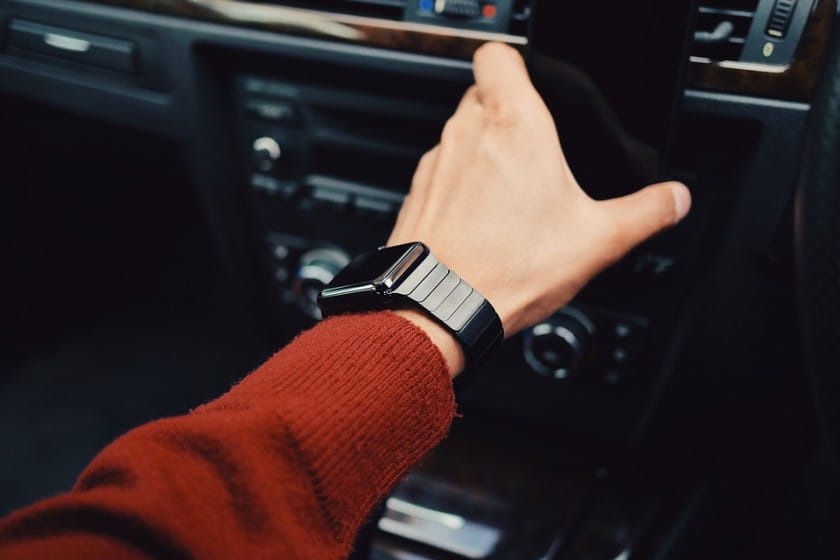
Making the decision
Here’s a handful of questions that you might want to ask yourself before you decide whether you should get one car or two:
- How many people are there in your family? What are their travel needs? If mum or dad are on the road a lot, and/or the kids do a lot of sport or out-of-school activities, a second car is a bit of a necessity.
- Where do you live? It goes without saying that the more remote your location, the more critical it is that more than one member of the family has access to a car at any given time. You can’t overlook the prospect of an emergency, where a matter of timing can be everything.
- What sort of trips are you likely to make? If they are all short trips, you might be able to make do with a bike or by walking.
- What is your local public transport like? If public transport provides you with sufficient access to shops, services and amenities in your area, save yourself from buying another car. Plus, you’ll do your bit for the environment!
- Do you have to transport a lot of items with you? Tradies are the obvious ones here, where a ute might make sense as a second vehicle. But if you’re riding around with an empty boot most of the time, is another car really all that useful?
As you’ll see, the decision is a highly personal one, and only you and your family will truly understand your vehicle needs.
2021 Peugeot 308 GT-Line: Private Fleet Car Review
This Car Review Is About: Peugeot’s stylish contender in the small to mid size hatchback category, with the addition of a wagon. There is the entry Allure, a Touring (wagon), the GT-Line and GT, which disappeared from the Peugeot Au site in January and has been discontinued. The 308 itself is an attractive looking machine, but is it a city or highway car? How Much Is It?: The range starts at $30,499 for the Allure, and has $34,990 against the GT-Line as a drive-away price.
How Much Is It?: The range starts at $30,499 for the Allure, and has $34,990 against the GT-Line as a drive-away price.
Under The Bonnet Is: Peugeot’s award winning engine at 1.2L of capacity, with three cylinders, a preference for petrol, and their EAT6 auto with eight ratios. Peak power is 96kW @5,500rpm, and a handy turbo-fed 230Nm @1,750Nm. It’s EURO6 emissions compliant at just 112 grams of CO2 per kilometre, and comes with Stop/Start tech. Peak economy is best seen on the highway, says Peugeot, where they quote 4.2L/100km.  In the “burbs” they say 6.4L/100km, and the combined cycle is 5.0L/100km. Fuel tank size is 53.0L. This didn’t equate to our real world driving, as just 250km worth of city driving had the gauge reading at a half tank used. Our overall average finished at 7.7L/100km on our typical 70/30 urban to highway split.
In the “burbs” they say 6.4L/100km, and the combined cycle is 5.0L/100km. Fuel tank size is 53.0L. This didn’t equate to our real world driving, as just 250km worth of city driving had the gauge reading at a half tank used. Our overall average finished at 7.7L/100km on our typical 70/30 urban to highway split.
On The Outside It’s: Typically French with good looks, svelte curves, and a hint of in-your-face assertiveness. It stands just 1,457mm in height yet is a proportionally longish 4,253mm, and spreads 1,553mm to 1,559mm in track. It’s low, long, and as a result, comes with an assertive road stance. There are the signature fins in the headlight assembly and the strip of LEDs for the indicators located in the “eyebrow” of the headlights. The rear lights feature another “Pug” signature, with the three strip “claw marks”. Wheels are alloys and painted a flat dark grey on sections of the wheel that give a ten spoke look. Rubber is, of course, Michelin, and are the super grippy Pilot Sport 3 at 225/40/Z18.
The rear lights feature another “Pug” signature, with the three strip “claw marks”. Wheels are alloys and painted a flat dark grey on sections of the wheel that give a ten spoke look. Rubber is, of course, Michelin, and are the super grippy Pilot Sport 3 at 225/40/Z18.
On The Inside It’s: Oddly, not quite as user friendly, in a couple of ways, as the Partner van. That has a better driver’s screen interface which is more accessible via the steering wheel tabs. In this 308 it was a button the right hand, wiper operating, stalk.
The button to deactivate the Stop/Start system, which is just that little bit too eager in the 308 GT-Line, is also more visible in the Partner.
Seats are cloth covered with leather type material on the wings, and metallic looking threads in the middle. The audio is AM/FM only, however a smartphone can be connected via USB or Bluetooth. It sits atop a dash with a defined W styling, and with minimal secondary controls.
The audio is AM/FM only, however a smartphone can be connected via USB or Bluetooth. It sits atop a dash with a defined W styling, and with minimal secondary controls.
This means using it necessitates eyes off the road as all main controls are on the exterior of the screen, and don’t always respond to a tap the first time whilst in motion.
Cabin plastics have a hard touch yet have a fine grain to the touch.
To start the 308, a press button Start/Stop system is employed, with the button in the centre console and for safety’s sake must be held for a second or so. The park brake comes on automatically when the doors are opened and although there is a setting to disengage it, it’s just as easy to start, then press it off as it’s right behind the Start button.
The indicator stalk is on the left hand side, with auto wipers engaged and disengaged by a dip of the right hand stalk. The wipers themselves aren’t terribly robust in motion. Airvents are thin horizontally and the touchscreen is the only option in controlling the system. And until you re-touch another tab, it’ll stay on the chosen (i.e. aircon) screen until the car powers off.
Airvents are thin horizontally and the touchscreen is the only option in controlling the system. And until you re-touch another tab, it’ll stay on the chosen (i.e. aircon) screen until the car powers off.
That centre console holds just one cup, with smallish bottle holders in the four doors.
The rear hatch is manually operated, opening to a 435L cargo section, with the press tab logically located in the upper section of the number plate recess. Seats down, there’s 1,274L. The spare, incidentally, is a space saver. On The Road It’s: A firm ride on the highways, with just the right amount of damping when required.
On The Road It’s: A firm ride on the highways, with just the right amount of damping when required.
It does, though, exhibit skittishness on some road joins and the like, with a mild but noticeable steering rack shake and accompanying left or right hop.
The location of the steering wheel, a Peugeot design signature, allows the GT-Line to feel sporty in the hands and in the handling. Its light, but not so that it isolates feedback.
The eight speed auto is a pearler, with quick shifts and perfectly matched to the tiny engine’s torque delivery.
We did notice though that the engine isn’t a fan of cold morning starts. Our time with the Peugeot 308 GT-Line coincided with some varying La Nina weather, with some mornings having a lacklustre and slow to react driveline.
We also noticed that the turbo behaviour would be different in nature at the same driving points, such as being ready to kick in or well off boost at the same speed coming to the same stop sign or give way sign.
In some instances, this lead to a few deep breath as the lack of urge at times had oncoming traffic looking to be in proximity earlier than they should, whereas at other times the engine would be ready to pull the 308 away without fuss. Disconcerting? Just a bit…
When it’s all cooperating, the engine and auto make a wonderful around town companion. There’s some decent urge from a standing start, and rolling acceleration is also decent without being outstanding. It’s a good highway cruiser, and is relatively quiet, even with the limpet grip Michelin tyres.
It’s a good highway cruiser, and is relatively quiet, even with the limpet grip Michelin tyres.
Unfortunately for us, the 308 wasn’t as suitable as needed for our Christmas travel requirements. This means the economy for the distance knowing to be travelled would be problematic with four humans and a decent amount of luggage.
Also, in some areas, the 1.2L would have struggled in the numerous uphill runs known for the route, and again would have played havoc with the economy.
What About Safety?: Pretty standard nowadays with AEB, Forward Collision Warning, and Sign Recognition.
Blind Spot Alert, reverse camera, and six airbags complement the main features.
What About Warranty And Service?: Five years warranty and unlimited kilometres are standard, and servicing is capped price, with Peugeot’s website providing specific pricing per vehicle type.
At The End Of The Drive. In a very competitive market, the 308 range is up against the Cerato, i30, Corolla, offerings from Ford and Mazda, and Renault’s Megane.
The drive is good, the drive-train a willing package, and it’s not unattractive inside and out.
In our opinion, it’s a very good city car and a not unworthy consideration on price. Having just two models to choose from makes choice an easy one but when others offer a broader range, it can be seen as a factor against it.
The dichotomy of the engine’s performance left us wondering about the overall consistency of delivery, a factor that doesn’t appear to be an issue in other brands.
New 2021 Cars To Save Up For and Buy
Keeping my ear to the ground and spying on what new cars are coming to Australia next year has revealed a decent line-up of cars that should peak interest, grab the attention and generally convince a new-car buyer to hold off their purchasing till one of these arrives. Let’s get straight down to business and take a look together:
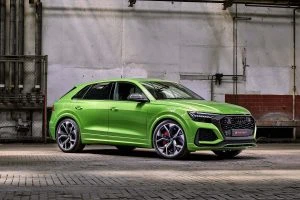
Audi RS Q8 2021
A new Audi RS Q8 is coming in October boasting a whopping 441 kW and 800 Nm. Hot performance is matched by AWD grip, and the interior is high-spec and gorgeous. Being a luxury-performance SUV from Audi, the price will be in excess of $200k.
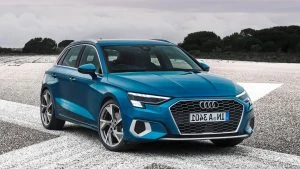
Audi A3 2021
Audi also will offer the new A3 Hatch alongside a new A3 Sedan. These two small cars will have all the latest gadgets, and will be powered by an excellent 1.4-litre TFSI turbo-petrol engine. The 4-cylinder is good for 110 kW and 250 Nm. Linked to an eight-speed torque-converter automatic, the new car will be zippy and very efficient. The A3 line-up wouldn’t be complete without the S3, and in 2021 we will see the new S3 Hatch and Sedan boasting a 2.0-litre turbocharged petrol engine with 228 kW, 400 Nm and AWD: Excitement!
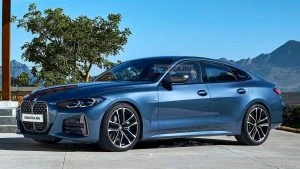
BMW 4 Series 2021
BMW gets a new 4 Series next year. The car’s styling is gorgeous, while the interior features nice materials and new, better technology. The base model 420i is good for 135 kW of power and 300 Nm of torque. The 430i packs a healthy 190 kW and 400 Nm. And the M440i xDrive uses a 3.0-litre turbocharged inline 6-cylinder petrol engine with 285 kW of power and a very strong 500 Nm of torque. All this power is put down via an eight-speed automatic and AWD.
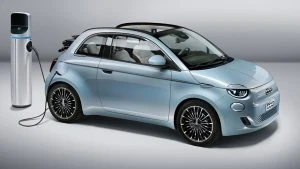
Fiat 500 EV 2021
A brand new and cute Fiat 500 EV will potentially make it to our shores in 2021. Powering the wee Fiat 500 is a 42 kWh lithium-ion battery pack that gives the car a 320km – 400 km range. This might be the perfect little urban runabout, with premium style and fun being at the forefront of the car’s design.
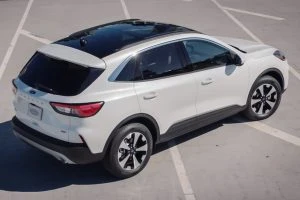
Ford Escape 2021
Ford boasts the entry of the new Ford Escape which can also be had as a PHEV model. The new Escape is really nice, practical and good to look at. It’s a comfy SUV with plenty of grunt and excellent fuel efficiency. The standard engine is the turbocharged 2.0-litre four-cylinder that produces 183 kW and 387 Nm through an excellent eight-speed automatic transmission. This engine is available throughout the range and can be had in FWD or AWD modes. The 2021 Ford Escape PHEV uses a naturally-aspirated 2.5-litre four-cylinder engine linked with an electric motor and a 14.4 kWh lithium-ion battery. The combined output is 167 kW. The Escape PHEV is good (it needs to be) and goes up against the successful Mitsubishi Outlander PHEV as well as the new Volvo XC40 hybrid.
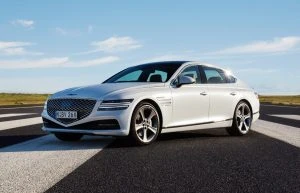
Genesis G80 2021
If you’re on the lookout for a new luxury sedan, then hang about for the latest Hyundai Genesis G80. This is quite a car with all the jaw-dropping looks to rival a Beemer 7 Series or Mercedes S-Class. A 2.5-litre turbo or 3.5-litre turbo petrol are the options, and both can be linked to RWD or AWD options. Smooth, quiet performance is likely to be matched with excellent reliability. The recent J.D. Power U.S. Vehicle Dependability Study looked at any problems experienced by owners of 3-year-old vehicles, and they found that the 2020 Genesis G80 was named the most dependable midsize premium car with the lowest rate of reported problems over time.
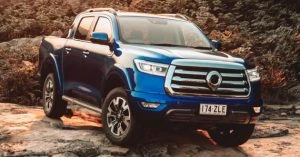
Great Wall Ute
A new Great Wall Ute has just become available, and it’s a nice package. The range consists of the Cannon, the Cannon-L and the range-topping Cannon-X. The new Great Wall Ute will come with the strong new 2.0-litre turbo-diesel 4-cylinder engine producing 120 kW of power and 400 Nm of torque. It will be offered with a choice of a six-speed manual or a ZF-sourced eight-speed automatic transmission, and it will also be able to pull a braked trailer of 2250 kg. This is similar in size to a Ford Ranger, Nissan Navara or Toyota Hilux, except it will be cheaper to buy.
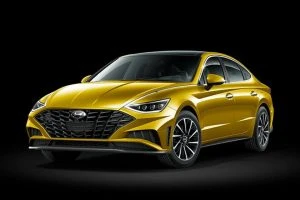
Hyundai Sonata 2021
We’ve got the classy looking new Hyundai Sonata Sedan. This has to be arguably the best looking mid-to-large sedan on the market. N-Line Sonatas are particularly good-looking and boast 19-inch alloy wheels, a boot-lid spoiler, unique bumpers, blacked out accents, a quad-tipped exhaust and a rear diffuser. The N-Line isn’t short on power either, with the new 213 kW/422 Nm 2.5-litre four-cylinder turbo petrol more than capable of dancing a jig. It’s also mated to an eight-speed dual-clutch automatic gearbox, which can see the car through to 100 km/h from a standstill in a mere 5.3 seconds.
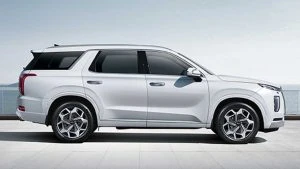
Hyundai Pallisade 2021
Hyundai’s new seven-seater Pallisade looks immense – which it is. This is a large luxury SUV with all the comfort of an S-Class. In Australia, we will get a petrol and a diesel option – which is excellent. The 3.8-litre V6 petrol is up for 217 kW of power and 355 Nm of torque. It’s mated to a very smooth eight-speed automatic transmission. The 2.2-litre turbo-diesel makes 147 kW and 440 Nm via its eight-speed automatic and AWD set-up. Diesel Pallisades are very efficient for such a big bruising SUV, and both engines are really good towing units.
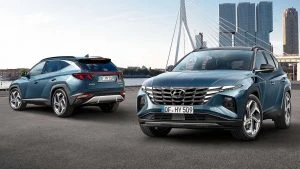
Hyundai Tucson 2021
Hyundai also boast the arrival of the new Tucson with its nice streamlined looks. The Tucson has proven pretty popular in Australia, so with the new base engine a naturally-aspirated 2.0-litre four-cylinder petrol, a turbocharged 1.6-litre petrol and a 2.0-litre turbo-diesel unit the options for power, the new medium comfortable SUV is set to build on current success story.
Hyundai iMax vans are very good and there will be a new one of these available by the end of 2021.
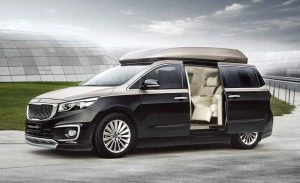
Kia Carnival 2021
Soon, you will be able to get into a new Kia Carnival, and with seven, eight or 11 seat configurations, this is a comfy and practical people mover. The new Carnival has to be one of the spunkiest looking people movers on the market; in a market which has seen the Honda Odyssey having the better styling over recent times. The new Carnival has it all: luxury, comfort, technology, safety; it’s all there.
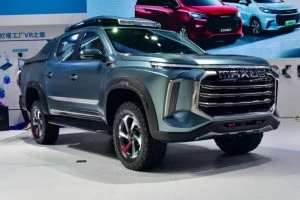
LDV T60 Ute 2021
A new LDV T60 will grace our roads next year. This is a good-looking, hard-working ute with good mechanicals, decent output and nice comfort and tech. It will come with the rugged turbo-diesel, which offers 120 kW and 375 Nm, ensuring frugal, dependable transport. The T60 has some pretty funky styling, boasting a seriously big grille, slim-line head lights, and a front DRL that runs the width of the ute.

Mercedes Benz S-Class 2021
An all-new Mercedes Benz S-Class is on the horizon. Expect the best and nothing less.
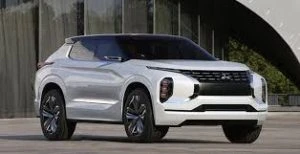
Mitsubishi Outlander 2021
Awards for most futuristic car might be going to the brand new 2021 Mitsubishi Outlander. The range-topping Outlander PHEV is expected to feature a larger battery than the current plug-in hybrid model, while the other engines are likely to be new, also.
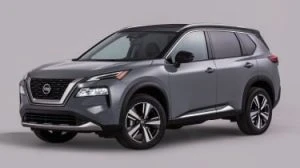
Nissan X-Trail 2021
I’ve always been a fan of the X-Trail’s ability in all areas, and now the new Nissan X-Trail is upon us with a design that has been pleasantly tweaked, and offering more technology in the classy package. Inside the new model, it’s packed with a new infotainment system with a 10.8-inch colour head-up display, a 12.3-inch digital dashboard, and a 9.0-inch touchscreen. Wireless Apple CarPlay is included, along with wireless phone charging. Nissan will also offer a full ProPilot suite of active safety assists on this model that will make this one of the safest in its class. The AWD system packs a new electro-hydraulic clutch, which is designed to more accurately and quickly shuffle the power load around the wheels when slippage is detected.
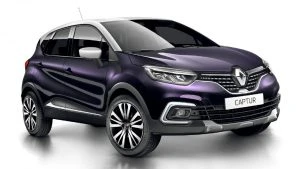
Renault Captur 2021
Renault’s classy small Captur SUV is worth the wait. Power will come from a 1.3-litre turbocharged petrol engine that is mated with a seven-speed dual-clutch transmission. Output is rated at 117 kW of power and there is a healthy 260 Nm of torque. Practicality and comfort is good inside a new Captur, which has a two-tier boot that holds up to 536 litres of luggage, and the split/folding rear seats can also be slid forward and back as needed.
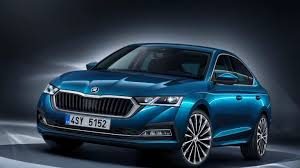
Skoda Octavia 2021
A sleek new Skoda Octavia impresses with its low-slung lines available in sedan or wagon styling. I personally love the shape of the wagon, with its long roofline and nicely filled out haunches. The Skoda Ocatvia RS will be powered by a 2.0-litre four-cylinder turbocharged engine making 180 kW and 370 Nm. A locking front differential and dual-clutch transmission will be standard. An efficient 1.4-litre turbocharged petrol four will likely run the rest of the Octavias. Skoda Octavias have always been at the forefront of space and practicality.

Subaru Outback 2021
A brand new Subaru Outback is coming! This is a brilliant SUV/Wagon built for tackling the rough as well as the smooth. The five-seater sits on a new modular Subaru Global Platform that is stiffer, boosting handling prowess and safety credentials. The exterior styling looks good, while the cabin is new and stylish. An 11.6-inch portrait-oriented centre touchscreen looks and functions really nicely. So, there’s a 2.5-litre naturally aspirated Boxer petrol engine that hauls nice and smooth and will be standard across the range. Also, a new 2.4-litre turbo unit with 190 kW of power replaces the six-cylinder option. This is a swift runner with great handling. All models will be offered with the symmetrical AWD system, and they’ll use a CVT with eight stepped ratios.
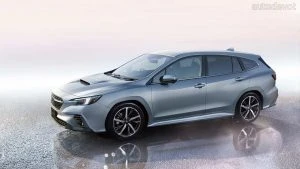
Subaru Levorg 2021
A new Subaru Levorg is also about to run out on stage. To start with, the Subaru Levorg will be powered exclusively by a 1.8-litre turbocharged four-cylinder boxer engine with 130 kW of power between 5200 and 5600 rpm, and 300 Nm of torque between 1600 and 3600 rpm. All-wheel drive is, of course, standard, as is a CVT. A punchier big Turbo model will, no doubt, become available later on.
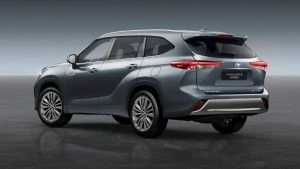
Toyota Kluger 2021
The new Toyota Kluger looks really good for the buyer looking to upgrade their old SUV. An electrified version of this comfy and stylish seven-seat SUV will make the running costs even better. The new Kluger hybrid blends a 2.5-litre petrol engine with two electric motors and a compact battery, delivering a maximum 179 kW output to the capable AWD system. If you’re after petrol alone, then the 3.5-litre V6 offers a throaty 218 kW and strong performance. FWD or AWD options are available, both of which run with a smooth eight-speed automatic transmission. Drive one of these, and you can see why so many people like-and-buy Klugers.
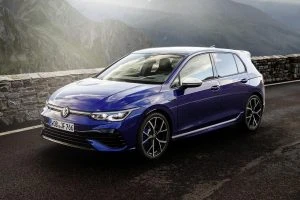
Volkswagen Golf 2021
Volkswagen has their popular new Golf on sale soon; and a new Golf always looks nice parked up the driveway.